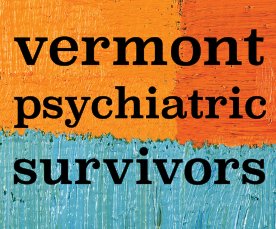Editorial: Housing First Means Housing First
Saying that housing is the solution to homelessness is a little like saying that oxygen is the solution to asphyxiation. Both statements are obviously true – though the former hasn’t always been as obvious to some as the latter.
But on their own, both also leave a few major questions hanging in the air. What can we do to unblock the choking person’s airway? Who will pull the drowning swimmer to shore? Where in Vermont can you find a vacant apartment? And if there aren’t any, how do we go about creating some?
A new advocacy coalition emerged this year to promote a program for ending homelessness in our state. Housing First Vermont consists of a handful of individuals and six admirable organizations: Disability Rights Vermont, Pathways Vermont, the ACLU of Vermont, the Vermont Center for Independent Living, Vermont Legal Aid, and End Homelessness Vermont.
“Housing First” is the name of a philosophy that progressive governments have increasingly begun to embrace. In our state, it’s also the name of a successful program operated by Pathways Vermont, a nonprofit that by its own count, has connected 873 homeless Vermonters to permanent housing since 2010.
As a philosophy, Housing First signifies a belief that the lack of a home constitutes the most urgent problem in a homeless person’s life and must be rectified as quickly as possible, regardless of their sobriety, mental state, or employment status. Adherents of Housing First aim to offer connections to supportive services, but if a client doesn’t want them, they will work just as hard to find that person an apartment.
This marks a departure from paternalistic approaches to homelessness services that instead target the perceived behavioral issues that may have caused the client to “fail” to retain housing or to secure it on their own. Before Housing First, the client had to prove that they had taken steps to address these issues before the prospect of permanent housing could enter the discussion.
Housing First recognizes that homeless people have not “failed.” Like all of us, they may have various personal issues to deal with, but every issue is easier to address when you have a warm, safe place to sleep. The philosophy aligns, in this way, with some of the central premises of the psychiatric survivor movement, which has long argued that the medicalization of psychological stress among poor people masks society’s refusal to resolve their inevitably distressing material deprivations.
No one should be deprived of housing. Some Vermonters have begun to see that, but it’s an ongoing process. Pathways, which operates its Housing First program in seven counties, continues to compete with other nonprofits in the same sector for governmental support, including some that may have more old-fashioned attitudes. This year, Pathways asked the legislature, unsuccessfully, for $5.3 million to bring Housing First statewide.
Granting this request was just one item in a list of eight policy recommendations put forward by Housing First Vermont. We appear to have a long way to go.
But could a fuller commitment to the principles of Housing First eventually solve Vermont’s homelessness problem? Unfortunately, insofar as these principles address the attitudes and practices of service providers, rather than the policies governing the building of homes, it can’t.
That’s because Housing First, as we’ve come to define it, is not housing itself. For service providers, it is an order of operations: before anything else, help the client apply for a Section 8 voucher, talk to landlords on their behalf, get them on the Champlain Housing Trust’s wait list, and so on.
This makes sense. But if no appropriate housing is available, a service provider’s best efforts can’t do anything – not until something opens up.
No one knows this better than service providers themselves, whose job of linking individuals to homes is made infinitely harder by Vermont’s widely lamented shortage of the latter. Legislators spent a major chunk of the legislative session debating what the state should do – and how far it should go – to fix it.
The major disputes revolved around H.829, H.687, and S.311. The first bill proposed to create a new high-income tax bracket to fund the state’s investments in affordable housing; the second and third competed to reform Act 250, Vermont’s statewide land-use law, by removing regulatory hurdles for developers in different ways.
All three bills saw impassioned testimony, but statehouse advocacy on behalf of Vermont’s homeless community continues to take place in a largely separate universe, even as such advocacy has become increasingly premised on the conviction that the answer to homelessness, as stated above, is housing. Ultimately, that comes down to the brick-and-mortar thing itself.
The indirectness of the link between forthcoming market-rate construction and the prospects of individuals living in shelters or on the street right now may account for part of the political gap between fights about housing and fights about homelessness. But efforts to expand profit-driven development through land-use liberalization constitute just one dimension of a struggle that can take countless shapes, including demands for rent control, “just cause eviction” protections, and new public housing authorities.
Housing First Vermont’s relatively narrow policy recommendations address the state’s programs for the homeless: how they should work and what kinds of organizations should administer them. They don’t say anything about the laws that will determine how many homes will exist in Vermont.
Both subjects are important. But the importance of homelessness services – and of their particular character – is conditional: a proper housing regime wouldn’t require them in the first place.
Getting there means getting political. Organizations on the front lines of the existing crisis should play a role in the battle, but it will require seeing and speaking beyond their own crucial programming and expertise.

